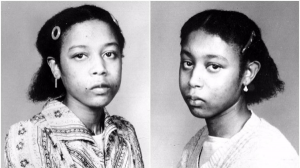If you’re from South Texas or Mexico, it’s very likely that you have at least a small bit of knowledge as to what Mexican Folk Dancing is: the art of dancing in beautifully colored dresses, telling their own story through their dance movements. Mexican Folkloric Dancing is very important in Mexico as it is one of the many ways that the people of Mexico celebrate their culture, independence, and ancestors.
The Mexican Hat Dance is one of the most popular Mexican Folk dances in Mexico. Originating from the state of Jalisco, the Mexican Hat Dance became one of the most popular dances in Mexico and soon made its way to South Texas. Jalisco is not only home to the Mexican Hat Dance, but it is also home to mariachi bands, the China Poblana female and Charro male costumes, and other Jarabe dance forms.1

The Mexican Hat Dance is usually performed by a couple (a man and a woman), where the dancers do not touch each other, but show the courtship between the each other.2 The Mexican Hat Dance, also known as “el Jarabe,” is a dance of flirtation. In the beginning of the dance, the woman is shy and timid, while the man is attentive and persistent. In most versions, the man tosses his sombrero on the floor so that he and the woman can dance around it.3 Most people from Guadalajara (a city in Jalisco) call the Mexican Hat Dance “el Jarabe Tapatio.” Jarabe means a specific mestizo song and dance form, and Tapatío is a term that is used to refer to the people of Guadalajara.4 This is why dancing is such an important art in Mexico. Although there are many forms of el Jarabe (The Mexican Hat Dance), el Jarabe Tapatio is the most important to the people of Jalisco–especially the people of Guadalajara. El Jarabe Tapatio gives a name to the people of Guadalajara and it lets everyone who performs their dance know that they are performing the dance of Guadalajara.
In the early 1900s, Anna Pavlova—a great Russian Ballerina—made the Mexican Hat Dance part of her repertoire and the Mexican Hat Dance became the “National Folk Dance” of Mexico.5 When Anna Pavlova fell in love with the dance and made it part of her repertoire in 1919, the ecstatic Mexican cultural authorities felt that it was an honor and that it could only mean that the Mexican Hat Dance was indeed the most important dance in Mexico. Thus it was decided, since it was such an important dance, that it should be danced wearing the “China Poblana” outfit. The outfit is a beautiful green, wide brimmed skirt with colorful sequence and a coordinating white blouse.6

The Jarabe Tapatío, or the Mexican Hat Dance, is a Mexican folk art that signifies the Mexican identity. Not only does it commemorate a sense of unity throughout the country of Mexico, it also showcases the traditions and culture of Mexico.7 Since its popularity came about during the Mexican Revolution, it brings a sense of cultural identity to the Mexican people: being able to showcase who they are and what they love through the beautiful art of dancing. Dancing in Mexico is a very important part of their culture as they use it to express themselves and to showcase who they are. The beauty and vividness of the dresses and the grace of the dancing are what have captivates audiences around the world.
Today, Mexican Folkloric dances are seen all throughout Mexico and all throughout South Texas. From festivals to basic social gatherings and even in dance competitions; not only is the Mexican Hat Dance seen, but many other forms of Mexican Folk dances are seen all throughout. Even in places like Fiesta, the ten-day long celebration that takes place in downtown San Antonio, citizens see Mexican Folkloric dancing take place all throughout the Fiesta celebration. The Mexican Hat Dance is not just a dance to the people of Mexico, rather, it is a way of showcasing to the rest of the world who the people of Mexico really are.
- Anthony Shay, Choreographic Politics: State Folk Dance Companies, Representation and Power (Middletown, CT: Wesleyan University Press, 2002), 40-41. ↵
- Jose Luis Ovalle, “The Mexican Hat Dance: National Folk Dance of Mexico,” Mexican Dance Company, 2007, http://mexicandancecompany.org/mexican-dance/mexican-hat-dance.html. ↵
- Encyclopedia Britannica, June 2017, s.v. “Jarabe: Mexican Dance.” ↵
- Brenda M. Romero, Dancing Across Borders: Danzas Y Bailes Mexicanos (Urbana and Chicago: University of Illinois Press, 2009), 287. ↵
- Jose Luis Ovalle, “The Mexican Hat Dance: National Folk Dance of Mexico,” Mexican Dance Company, 2007, http://mexicandancecompany.org/mexican-dance/mexican-hat-dance.html. ↵
- Jose Luis Ovalle, “The Mexican Hat Dance: National Folk Dance of Mexico,” Mexican Dance Company, 2007, http://mexicandancecompany.org/mexican-dance/mexican-hat-dance.html. ↵
- Jose Luis Ovalle, “The Mexican Hat Dance: National Folk Dance of Mexico,” Mexican Dance Company, 2007, http://mexicandancecompany.org/mexican-dance/mexican-hat-dance.html. ↵


54 comments
Robert Rees
I had no idea that the version of the Mexican Hat Dance known as “el Jarabe Tapatio” was a version that was indicative of Guadalajara. I knew that most dances which are tied to a specific culture or religion have different variations depending on the region they are performed in, however I didn’t know that the Mexican Hat Dance was also ones of these types of dances. The inclusion of the Russian Ballerina’s use of the dance is also a great way of showing just how beautiful this dance is. Overall this is a fantastic article.
Tessa Bodukoglu
I loved reading this article. The way the author describes the dance is spot on. Its a beautiful dance to watch because you can see the raw emotion of the dancers come to life. This dance can be interpreted into many different forms. There is simply not just “one” form of the dance. It is interpreted into many different ways depending on the culture and the people dancing it, but this is a true sign of Mexican culture.
Jocelyn Moreno
I’ve grown up watching this dance on television and in festivals. It’s so beautiful and the way they move is so graceful. It’s nice to finally learn the history of this wonderful dance. I love the fact that when people see this dance they can see a bit of culture of Mexico. This article was very informative! I loved it!
Lyzette Flores
Reading this article brought up some past memories I had. This past December my family and I went to Mexico for the holidays and I remember seeing some dancers perform el jarabe tapatio. Everyone was amazed by them and continued to cheer them on. I couldn’t believe that there were children at such a young age dancing so good! It just proves how they all love it as the dance represents our culture and beliefs.
Didier Cadena
This was a very interesting article. I was not too familiar with the Mexican Hat dance, so it was nice to read a little bit about it. I found it surprising that a dancer from Russia knew about the dance and made it a part of her routine. The way that the article was structured made it fun and interesting to read about.
Jose Fernandez
I find this topic very interesting because I am from Guatemala (right below Mexico). Many of the traditions and cultural practices that Mexico has are like the ones in my country. I think it is important to know the cultural traditions of a country because that is what makes it unique. The dance described in the article is very distinctive and amazing. I saw it once when I went to Mexico. I was really entertained.
William Ward
Other cultures and their customs have always been of interest to me, so this article particularly stuck out since I actually have had the great fortune of being a part of this hat dance. Definitely, a good read about such an interesting cultural custom and how they express themselves through dance, especially the tradition that goes right along with it.
Daniela Duran
I really like how this dance is presented as a symbol of cultural identity! It is certainly awesome that a country can learn to portray who its people are through a dance as this one. I believe that fostering this type of cultural activities is always important so as to maintain the interest of society in art, especially now that our attention is so driven into technology, leaving arts aside. I like the fact that Mexicans only took pride in their dance once a professional ballerina decided to make it a part of her repertoire. Perhaps sometimes we need to see our culture through other people’s eyes, so that we can learn to value and treasure it as it deserves. Finally, I would really like to know where the idea of dancing around the hat comes from! Sounds like a very interesting story.
Roman Olivera
The Mexican Hat Dance is definitely something that is shown or taught to Hispanics at a young. It is seen as very traditional in the Mexican culture, and is performed not only in Mexico and Texas, but also in Southern California, were the Mexican population is and heritage is alive and well!! I like how you described the origins of the dance and how it was made popular internationally. I am glad to hear that Mexicans across the United States keep this great Mexican tradition alive for our future generations to enjoy and learn why its so important to us.
Alexandra Lopez
I was born and raised in South Texas while being the daughter of first generation U.S. citizens. Dancing has always been important in my family and every event we celebrate or gather dancing is always involved. The Mexican Hat Dance is one of the many dances my family and I have either danced to or seen the dance. This article demonstrates the beautiful tradition of this dance and the importance it has to those who have ancestors from Mexico or respect the beauty of the dance.